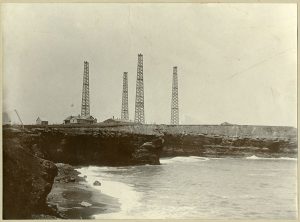Marconi in Canada
On December 24, 1901, Guglielmo Marconi went to the St. John’s train station. He was met by a crowd of people, cheering for him and asking him to stay. While the AATC wanted him out of the country, many people in Newfoundland did not. Citizens openly protested the AATC and several politicians spoke out against the company. Bishop Michael Francis Howley even wrote an open letter to the premier of Newfoundland. He told him to end the monopoly and allow Marconi to stay. Howley argued that it would benefit the colony, both financially and in quality of life. But Premier Bond did not act, the AATC did not back down, and Marconi was forced to leave.
Marconi was well received when he arrived in Nova Scotia. Canadian government officials personally welcomed him. They offered him a location in Glace Bay and $80,000 in funding to work there (worth more than two million Canadian dollars in today’s money). Marconi accepted and began the next leg of his work: creating wireless stations. He had made the technology, now it was time to use it.
Marconi formed the Wireless Telegraph Company of Canada (later renamed the Canadian Marconi Company, or CMC) in 1902. The CMC signed deals with the governments of both Newfoundland and Canada. These deals would have the CMC build wireless stations along the coasts of Newfoundland and Labrador. While these stations were only small operations, the effect they would have on their communities was invaluable.


